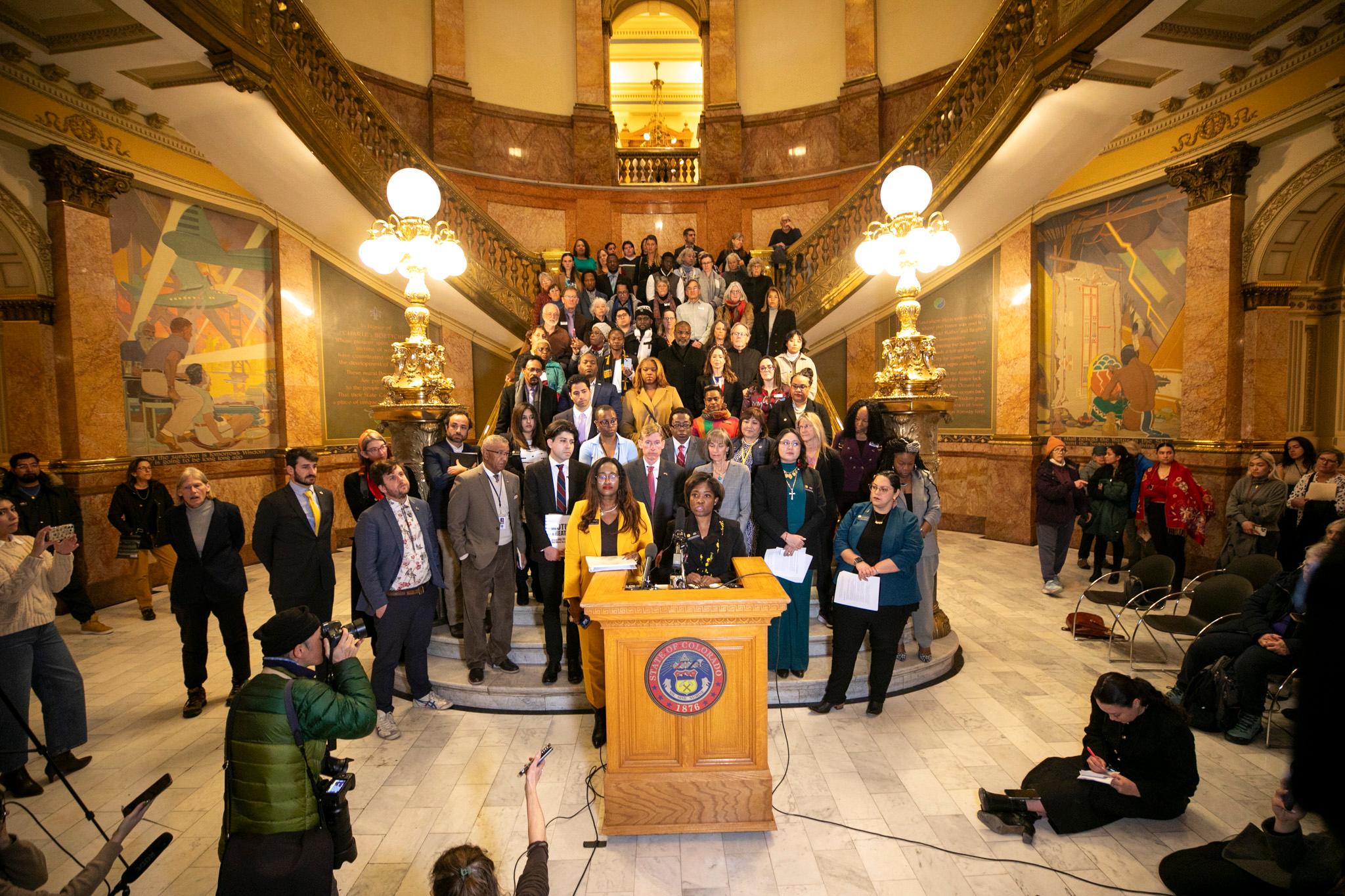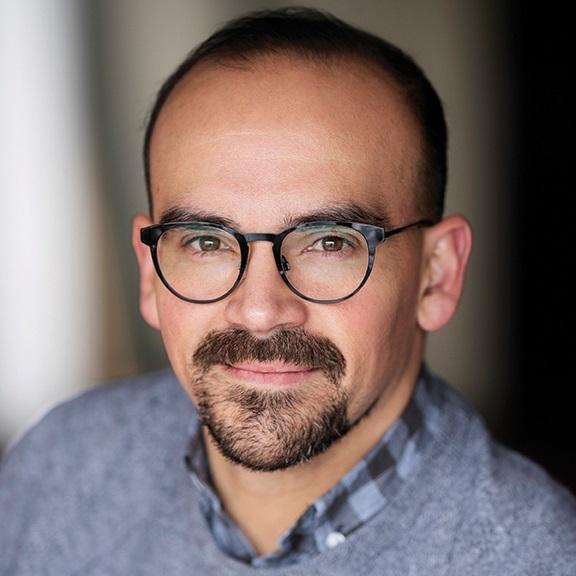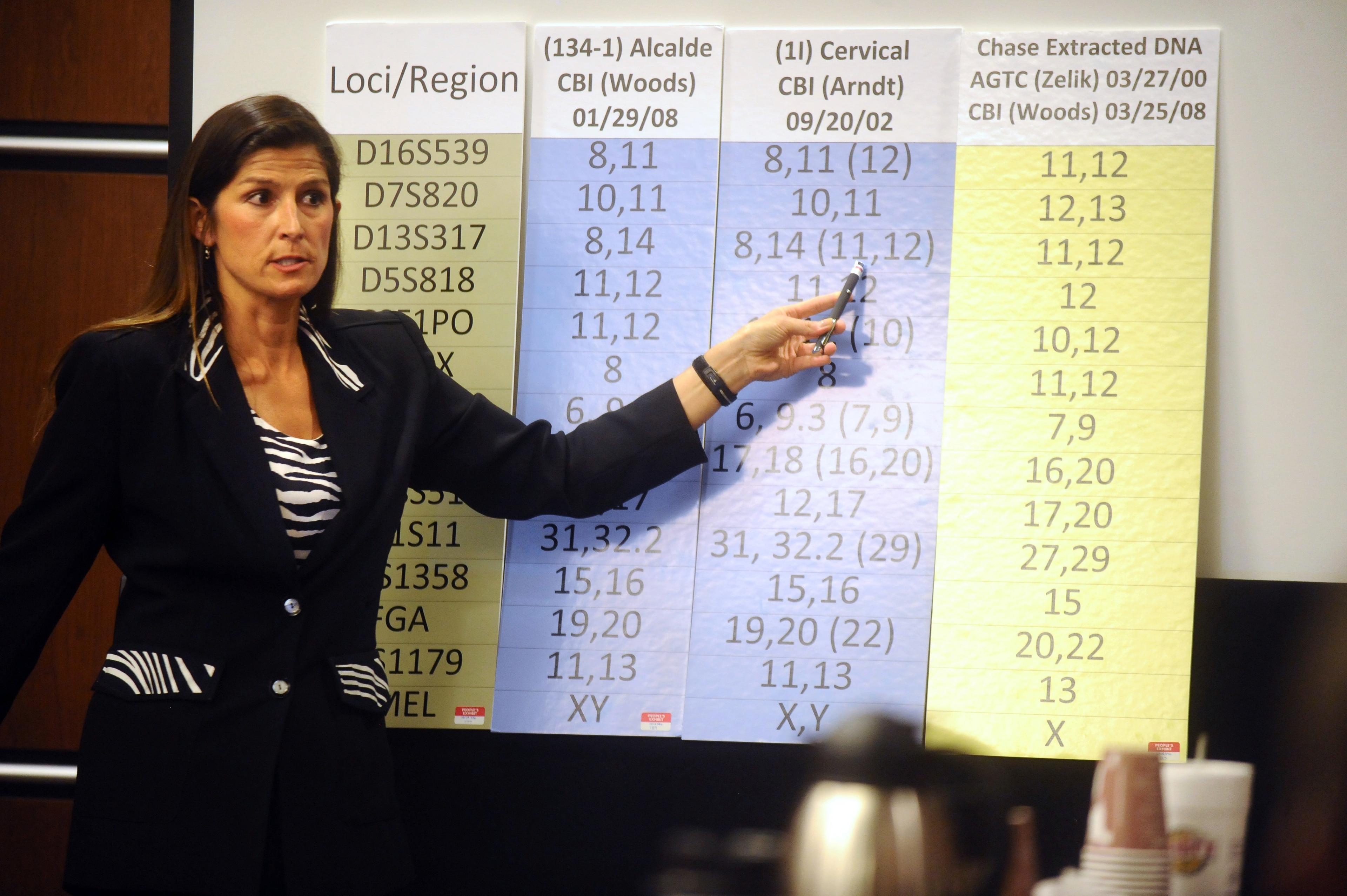Rapid population growth in the Mountain West means new infrastructure. Under federal law, potential sites for things like road expansions must be surveyed and possibly excavated to see what’s below the ground. That means cultural artifacts can be disturbed and destroyed.

Just outside Durango, Colo., archeologist Rand Greubel stands on a mesa surrounded by juniper trees, and he points to a large pit house from the Pueblo I period. It’s a circular hole in the ground, about 30 feet across and more than 8 feet deep. There’s a fire pit in the center of an earthen floor, ventilation shafts tunneled into the side walls, and bits of burned thatching that suggest how the structure once continued above the ground.
“We knew right away that it was highly significant just because of the sheer size of it,” Greubel says.

It’s amazingly well preserved. Greubel thinks this particular pit house was probably a center for ceremonies or gatherings for the Ancestral Puebloan people who lived here roughly 1,200 years ago. That was before they are believed to have migrated west to the Mesa Verde area and then south to become the ancestors of the Hopi, Zuni, and various Pueblo tribes.

"When we were working down here you kind of have a sense of peace and you feel like you're accomplishing something good." - Archaeologist, Rand Greubel
“When we were working down here you kind of have a sense of peace and you feel like you’re accomplishing something good,” Greubel says. “I know not all people think that way, but we treated the site with respect and a sense of awe.”
And it is awe-inspiring standing inside this space that has held human history for more than 1,000 years. But its newly discovered existence will be short-lived. That’s because it’s about to be filled in and covered up by a highway, along with six other important ancient sites on this mesa.
Dan Jepson, an archeologist with the Colorado Department of Transportation, says they don’t have a choice. CDOT’s rerouting a steep, narrow one-and-a-half mile stretch of highway that the agency says was too dangerous for the increasing volume of traffic.

“This is all about balance between the ethics that I have as an archaeologist in the context of working for an agency that destroys things in the name of progress,” Jepson says.
"This is all about balance between the ethics that I have as an archaeologist in the context of working for an agency that destroys things in the name of progress." - CDOT archaeologist, Dan Jepson
Over the last two decades, he says, CDOT has explored scores of other possible routes for the road to avoid destroying cultural artifacts. But because Southwest Colorado is so full of native history, every option intersected with potential archaeological sites. Jepson says the agency reached out to dozens of tribes in the region to offer them a chance to participate in the project and give feedback. The Southern Ute tribe agreed to consult with the agency. After all, the new construction site will cross the outer boundaries of its reservation.
But some Southern Ute citizens still feel upset that the digs are happening at all, and they don’t feel empowered to stop them.
Just down the road, Sam Maez is visiting the last of the seven dig sites still in progress. He’s a member of the Southern Ute tribe and was invited to speak to archaeologists as part of the agency’s outreach efforts. Trucks barreling up the hill behind him are a reminder of the regular heavy road traffic through this area.
“You know, after generations and generations of basically exterminating us and getting rid of everything that we believe in, and here we are picking the scabs of Mother Earth, you know, and wondering what, why and who these people were,” Maez says. “Well, they're us.”
He alludes to the human remains the archaeologists found while excavating several of the sites under the proposed highway path.

“You know, those are my family’s bones in there,” Maez says. “Those are what we put in the ground already. We don’t have a ceremony to dig them up and put them somewhere else.”
He says projects like this have forced tribes to adapt to that process and create new rituals in order to remove and re-bury remains.
"You know, those are my family's bones in there." - Southern Ute tribal member, Sam Maez
Maez says he’s grateful he was invited to share his thoughts. But he also makes it clear he wishes the agency had just made the original road wider instead of embarking on a new stretch of highway. He doesn’t believe the road project is only about making the area safer for drivers.
“In my opinion, it’s always money,” he says. “It’s always been about money. It’s always gonna be about money.”
And he has a point. While CDOT has foregrounded the safety issues in justifying this $98 million project to the public, it also put out a report back in 2016 that highlights the commercial opportunities the new stretch of road would open up for the region.

The report says, “Durango is mountainous and space-constrained with limited land suitable for large scale development...With the access provided by the new interchange, it will become a prime location for a series of big-box retail stores that the area currently lacks.”
Garrett Briggs is with the Southern Ute tribe as well. He’s also an archeologist and an apprentice coordinator for the Native American Graves Protection and Repatriation Act.
“It is really difficult for tribes to process and accept what is taking place, and specifically to the unearthing of ancestors and the desecration of ancestral sites,” Briggs says.
Briggs is thankful that the state made good-faith attempts to involve his tribe in the process, even if that involvement didn’t include ultimate veto power on the project itself. And he acknowledges some archaeological and cultural value in the excavations. But he thinks it’s a net loss for tribal communities.

"The desecration of a burial or an archaeological site -- there's no going back." - Southern Ute tribal member and archaeologist, Garrett Briggs
“The desecration of a burial or an archaeological site—there's no going back,” he says.
Artifacts from these excavations will be analyzed in a local lab and then eventually curated as an exhibit at the Canyons of the Ancients museum in Dolores, Colorado. Construction on the new highway is set to begin in the spring.

This story was produced by the Mountain West News Bureau, a collaboration between Wyoming Public Media, Boise State Public Radio in Idaho, KUER in Salt Lake City, KUNR in Nevada and KRCC and KUNC in Colorado.









